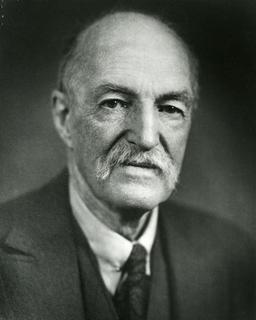 Gifford was born August 11, 1865, in Simsbury, Connecticut. He was educated at Phillips Exeter Academy and Yale University, where he receivd a BA degree in 1899. He also held the MA (1901) and LLD (1925) degrees from Yale, MA degree (1904) from Princeton University, ScD degree (1907) from Michigan Agricultural College, LLD degree (1909) from McGill University, LLD degree (1923) from Pennsylvania Military College, and LLD degree (1931) from Temple University. He was the first American to receive formal instruction in forestry; he studied at National School of Waters and Forests, Nancy, France, in 1900. No academic institution in the United States then offered forestry courses.
Gifford was born August 11, 1865, in Simsbury, Connecticut. He was educated at Phillips Exeter Academy and Yale University, where he receivd a BA degree in 1899. He also held the MA (1901) and LLD (1925) degrees from Yale, MA degree (1904) from Princeton University, ScD degree (1907) from Michigan Agricultural College, LLD degree (1909) from McGill University, LLD degree (1923) from Pennsylvania Military College, and LLD degree (1931) from Temple University. He was the first American to receive formal instruction in forestry; he studied at National School of Waters and Forests, Nancy, France, in 1900. No academic institution in the United States then offered forestry courses.
After opening a forestry consulting office in New York in 1891, Gifford began the first systematic forest management in the United States at Biltmore, the Vanderbilt estate in North Carolina, in January 1892. Gifford was in a private consulting practice for several years thereafter, and in 1896, was a member of the Forest Commission appointed by the National Academy of Sciences. The Commission recommended creation of forest reserves (now national forests) from the public domain, which was responsible for the Forest Reserve Act of 1897 that provided for the administration and protection of the reserves.
In 1898, Gifford was appointed forester and chief of the U.S. Department of Agriculture’s Division of Forestry, which became the Bureau of Forestry in 1901 and the Forest Service in 1905. Also in 1905, the forest reserves were transferred from the U.S. Department of the Interior to Agriculture, and in 1907, were renamed national forests. During Gifford’s administration, national forests increased from 51 million acres in area in 1901 to 175 million acres by 1910.
Gifford was organizer of The White House Governors’ Conference on Natural Resources in May 1908. He also chaired the subsequent National Conservation Commission that compiled the first inventory of the country’s natural resources.
In 1910, he was dismissed as chief of the Forest Service by President Taft. He spent the next several years supporting Theodore Roosevelt’s Bull Moose presidential campaign of 1912. He also organized and became president of the National Conservation Association, formed to continue the fight for his conservation ideas, and he served as a member of the Federal Food Commission.
From 1920 to 1922, Gifford was commissioner of Pennsylvania’s Department of Forestry and later secretary of that state’s Department of Forests and Waters. He served as governor of Pennsylvania from 1923 to 1927 and from 1931 to 1935.
Gifford founded the School of Forestry at Yale University, and also the Society of American Foresters, of which he was its first president. An avid birder, Gifford authored numerous papers and reports on conservation topics, including books A Primer of Forestry (1899), The Fight for Conservation (1909), The Training of a Forester (1914), and Breaking New Ground, his autobiography (1947).
Gifford, acknowledged as the “father” of American forestry, was largely responsible for conservation becoming widely known and supported by the public and established in policy by both federal and state governments. He is credited with popularizing the term “conservation” in its modern, natural resource context, and in asserting its definition as “the greatest good for the greatest number.”
He married Cornelia Elizabeth Bryce in 1913. They had one son, Gifford Bryce. He died in New York on October 4, 1946.
Gifford was elected to membership in the Washington Biologists’ Field Club in 1905.